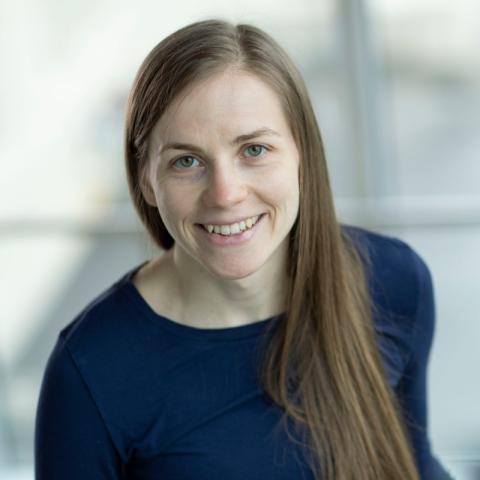When Ainsley Buckner arrived at think[box] as a community user and artist-educator, she never imagined that she’d one day be working at the innovation space full time. Buckner, who joined think[box] six years ago and is the director of prototyping art and community engagement, isn’t an engineer—she has a bachelor’s degree in fine arts with a concentration in sculpture and printmaking. But her experience, creativity and perspective makes her an ideal member of the think[box] team. “Once I was here, I realized that we embrace a multidisciplinary background approach,” she says. “Having an ecosystem of people with a diverse set of professional and personal backgrounds really promotes innovation.” Learn more about Ainsley Buckner.
What first brought you to think[box] as a community member?
I worked at a nonprofit that does arts integration programs for youth in Cleveland’s public schools and I was using think[box] as a user to help create the projects for the schools I was working with, which were mostly STEM schools. For example, if I was paired with a teacher who was doing a lesson on circuits, my job was to figure out how I could use sculpture to teach kids more about circuits. A lot of the sculptures were collaborative, where each student was making a component of a bigger sculpture. I would teach the students 2-D and 3-D CAD softwares to create their piece and then bring their files to think[box] and cut or print them out using the laser cutters and 3-D printers.
What convinced you that you think[box] would be a good career fit for you?
At first, when Ian Charnas [think[box] director of innovation and technology] suggested that I apply for the job, my reaction was that I didn’t have the right degree. But he told me that I knew how to use the machines, and that I could teach people and was patient. He said that I didn’t need to have an engineering degree to do those things. Now I realize that when you bring together all these different people, it really helps with creativity, problem solving, and new ideas. I started to realize that even though I wasn't an engineer, I had value to bring because my perspective was different from most of my colleagues who were engineers.
So now, do you feel like you’re equal parts artist and engineer?
It’s funny, most people think I’m an engineer because I work at think[box] and because I am in charge of the Prototyping Floor. So when people say things like “I don’t know how to do that, I’m not an engineer,” I’m able to respond, “Well, neither am I!” Then, they realize you don’t have to be an engineer to make things at think[box]. Additionally, there are actually a lot of similarities between engineers and artists in terms of materials and concepts. We just come at them from the lenses of our personal disciplines and experiences. For example, think[box] Faculty Director Jim McGuffin-Cawley has a background in Materials Science. He can explain why materials behave the way they do. When you combine his knowledge with my artist background, understanding how to manipulate materials, you get a team with complementary strengths. By having different backgrounds collaborate, we enhance the depth of what we do, what we understand, and what we can offer.
Tell us about the range of skills of the community members who visit think[box].
There’s a mixture, really. Our community users range from experts in their fields to novice makers gaining access to new tools and equipment for the first time. For all of our new users who come in, our goal is to help them feel comfortable in the space and to set expectations for their project goals. Many assume that using new technologies will yield instant results and cut down on the making time and process. In reality, when a user comes in, they will have the opportunity to learn software and equipment processes, which can take time. Others are under the impression that the think[box] staff is going to make the project for them. For those new to making, we offer consultations and always have staff in aprons ready to help everyone as they progress in our space and on their making journey. One entry-level project we recommend as a starting place is making a coaster or a keychain **website link**, which gets users comfortable and familiar with the capabilities of our laser cutters and vector-based software. This starting point allows one to apply their new understanding of the machine's capabilities to more in depth projects.
What do you like best about working at think[box]?
I enjoy working with both the users and the student technicians. As someone with a general fine arts background, I often get asked if I still have a practice. My art practice, or my medium is collaboration. And so literally, my favorite part is working with people and helping them figure out solutions to facilitate their success in our space and in their work.


